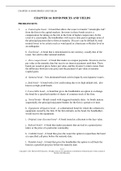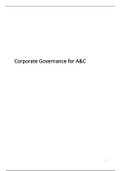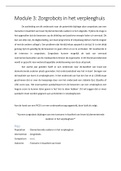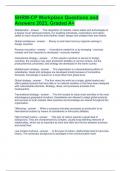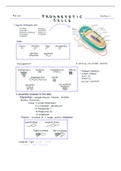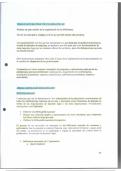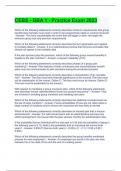CHAPTER 14: BOND PRICES AND YIELDS
CHAPTER 14: BOND PRICES AND YIELDS
PROBLEM SETS
1. a. Catastrophe bond—A bond that allows the issuer to transfer “catastrophe risk”
from the firm to the capital markets. Investors in these bonds receive a
compensation for taking on the risk in the form of higher coupon rates. In the
event of a catastrophe, the bondholders will receive only part or perhaps none of
the principal payment due to them at maturity. Disaster can be defined by total
insured losses or by criteria such as wind speed in a hurricane or Richter level in
an earthquake.
b. Eurobond—A bond that is denominated in one currency, usually that of the
issuer, but sold in other national markets.
c. Zero-coupon bond—A bond that makes no coupon payments. Investors receive
par value at the maturity date but receive no interest payments until then. These
bonds are issued at prices below par value, and the investor’s return comes from
the difference between issue price and the payment of par value at maturity
(capital gain).
d. Samurai bond—Yen-dominated bonds sold in Japan by non-Japanese issuers.
e. Junk bond—A bond with a low credit rating due to its high default risk; also
known as high-yield bonds.
f. Convertible bond—A bond that gives the bondholders an option to exchange
the bond for a specified number of shares of common stock of the firm.
g. Serial bonds—Bonds issued with staggered maturity dates. As bonds mature
sequentially, the principal repayment burden for the firm is spread over time.
h. Equipment obligation bond—A collateralized bond for which the collateral is
equipment owned by the firm. If the firm defaults on the bond, the bondholders
would receive the equipment.
i. Original issue discount bond—A bond issued at a discount to the face value.
j. Indexed bond— A bond that makes payments that are tied to a general price
index or the price of a particular commodity.
k. Callable bond—A bond that gives the issuer the option to repurchase the bond
at a specified call price before the maturity date.
l. Puttable bond—A bond that gives the bondholder the option to sell back the
bond at a specified put price before the maturity date.
14-1
Copyright © 2021 McGraw-Hill Education. All rights reserved. No reproduction or distribution without the prior written consent of
McGraw-Hill Education.
, CHAPTER 14: BOND PRICES AND YIELDS
2. The bond callable at 105 should sell at a lower price because the call provision is
more valuable to the firm. Therefore, its yield to maturity should be higher.
3. Zero coupon bonds provide no coupons to be reinvested. Therefore, the investor's
proceeds from the bond are independent of the rate at which coupons could be
reinvested (if they were paid). There is no reinvestment rate uncertainty with zeros.
4. A bond’s coupon interest payments and principal repayment are not affected by
changes in market rates. Consequently, if market rates increase, bond investors in
the secondary markets are not willing to pay as much for a claim on a given
bond’s fixed interest and principal payments as they would if market rates were
lower. This relationship is apparent from the inverse relationship between interest
rates and present value. An increase in the discount rate (i.e., the market rate)
decreases the present value of the future cash flows).
5. Annual coupon rate: 4.80% → $48 Coupon payments
Current yield:
$48
= 4.95%
$970
6. a. Effective annual rate for 3-month T-bill:
4
100,000
− 1 = 1.02412 4 − 1 = 0.100 = 10.0%
97,645
b. Effective annual interest rate for coupon bond paying 5% semiannually:
(1.05.2 − 1) = 0.1025 or 10.25%
Therefore the coupon bond has the higher effective annual interest rate.
7. The effective annual yield on the semiannual coupon bonds is 8.16%. If the
annual coupon bonds are to sell at par they must offer the same yield, which
requires an annual coupon rate of 8.16%.
8. The bond price will be lower. As time passes, the bond price, which is now above
par value, will approach par.
9. Yield to maturity: Using a financial calculator, enter the following:
n = 3; PV = −953.10; FV = 1000; PMT = 80; CPT I/Y
14-2
Copyright © 2021 McGraw-Hill Education. All rights reserved. No reproduction or distribution without the prior written consent of
McGraw-Hill Education.
CHAPTER 14: BOND PRICES AND YIELDS
PROBLEM SETS
1. a. Catastrophe bond—A bond that allows the issuer to transfer “catastrophe risk”
from the firm to the capital markets. Investors in these bonds receive a
compensation for taking on the risk in the form of higher coupon rates. In the
event of a catastrophe, the bondholders will receive only part or perhaps none of
the principal payment due to them at maturity. Disaster can be defined by total
insured losses or by criteria such as wind speed in a hurricane or Richter level in
an earthquake.
b. Eurobond—A bond that is denominated in one currency, usually that of the
issuer, but sold in other national markets.
c. Zero-coupon bond—A bond that makes no coupon payments. Investors receive
par value at the maturity date but receive no interest payments until then. These
bonds are issued at prices below par value, and the investor’s return comes from
the difference between issue price and the payment of par value at maturity
(capital gain).
d. Samurai bond—Yen-dominated bonds sold in Japan by non-Japanese issuers.
e. Junk bond—A bond with a low credit rating due to its high default risk; also
known as high-yield bonds.
f. Convertible bond—A bond that gives the bondholders an option to exchange
the bond for a specified number of shares of common stock of the firm.
g. Serial bonds—Bonds issued with staggered maturity dates. As bonds mature
sequentially, the principal repayment burden for the firm is spread over time.
h. Equipment obligation bond—A collateralized bond for which the collateral is
equipment owned by the firm. If the firm defaults on the bond, the bondholders
would receive the equipment.
i. Original issue discount bond—A bond issued at a discount to the face value.
j. Indexed bond— A bond that makes payments that are tied to a general price
index or the price of a particular commodity.
k. Callable bond—A bond that gives the issuer the option to repurchase the bond
at a specified call price before the maturity date.
l. Puttable bond—A bond that gives the bondholder the option to sell back the
bond at a specified put price before the maturity date.
14-1
Copyright © 2021 McGraw-Hill Education. All rights reserved. No reproduction or distribution without the prior written consent of
McGraw-Hill Education.
, CHAPTER 14: BOND PRICES AND YIELDS
2. The bond callable at 105 should sell at a lower price because the call provision is
more valuable to the firm. Therefore, its yield to maturity should be higher.
3. Zero coupon bonds provide no coupons to be reinvested. Therefore, the investor's
proceeds from the bond are independent of the rate at which coupons could be
reinvested (if they were paid). There is no reinvestment rate uncertainty with zeros.
4. A bond’s coupon interest payments and principal repayment are not affected by
changes in market rates. Consequently, if market rates increase, bond investors in
the secondary markets are not willing to pay as much for a claim on a given
bond’s fixed interest and principal payments as they would if market rates were
lower. This relationship is apparent from the inverse relationship between interest
rates and present value. An increase in the discount rate (i.e., the market rate)
decreases the present value of the future cash flows).
5. Annual coupon rate: 4.80% → $48 Coupon payments
Current yield:
$48
= 4.95%
$970
6. a. Effective annual rate for 3-month T-bill:
4
100,000
− 1 = 1.02412 4 − 1 = 0.100 = 10.0%
97,645
b. Effective annual interest rate for coupon bond paying 5% semiannually:
(1.05.2 − 1) = 0.1025 or 10.25%
Therefore the coupon bond has the higher effective annual interest rate.
7. The effective annual yield on the semiannual coupon bonds is 8.16%. If the
annual coupon bonds are to sell at par they must offer the same yield, which
requires an annual coupon rate of 8.16%.
8. The bond price will be lower. As time passes, the bond price, which is now above
par value, will approach par.
9. Yield to maturity: Using a financial calculator, enter the following:
n = 3; PV = −953.10; FV = 1000; PMT = 80; CPT I/Y
14-2
Copyright © 2021 McGraw-Hill Education. All rights reserved. No reproduction or distribution without the prior written consent of
McGraw-Hill Education.


